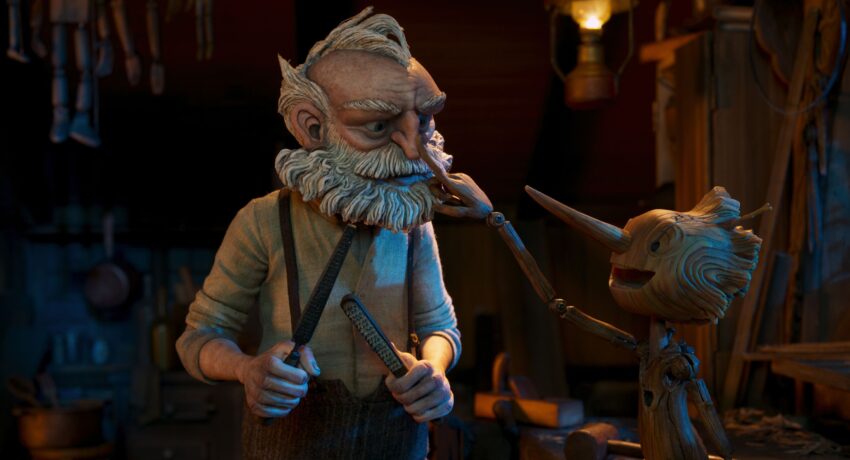Guillermo Del Toro’s Pinocchio: Life, Death, and Everything in Between

Del Toro Brings To Life The Infamous Puppet With Vivid Imagination and Pure Humanity In What Might Be The Best Film of The Year
I have a confession to make. Something that I’m not particularly proud of. I am not a Del Toro fan. There, I said it!
While there’s no denying the sheer craft and talent that goes behind his films, I always found them to be a bit hollow, with no real substance standing behind all the flash and flare. I still haven’t seen Pan’s Labyrinth yet (I know, I know), but other entries, such as The Shape of Water or Nightmare Alley, always felt more like gothic tales from a college workshop instead of realized films with depth and compassion. So, of course, I wasn’t particularly thrilled to hear that there would be yet another adaptation of Disney’s precocious puppet at the hands of Del Toro. It struck me as ironic: a director whose films I found to be lifeless tackles a story about what it means to be alive. And to make matters worse, it would be on Netflix, a place where useless reboots and remakes go to be put out to pasture. Needless to say, this rendition of Pinocchio wasn’t anywhere on my radar.
What a mistake that was.
Meticulously brought to life through stop-motion animation, Guillermo Del Toro’s Pinocchio places the titular puppet against the backdrop of Mussolini’s fascist Italy. It’s a pretty dark reimagining of a beloved Disney figure, but while other adaptations go for a darker tone for superficial reasons, this Pinocchio earns its maturity thematically with perspectives on life and death and how the latter brings meaning to the former. The film strolls along at a relaxed pace as Pinocchio bounces from sequence to sequence, encountering a wide range of colorful characters, some friendly, others dangerous. Just as every child does, Pinocchio begins to craft his understanding of the world based on the personal biases of those around him. Compassion from his profoundly sensitive father figure Gheppetto. Wisdom from the pessimistic Jimminy Cricket. Faith from the town priest. These rudimentary learnings are often foundational to animated pieces targeted toward a younger audience. But as the story progresses and more characters are thrown into the fray, Del Toro pushes further and further into examining the human condition, showing the wide range of humanity among his ensemble of figurines.
Pinocchio feels like the best mix of the director’s new and old talents, with a story ripe for a vivid reimagining from a filmmaker at the top of his game with the wisdom that comes from age and experience. There’s a sense of distinct purpose in Del Toro’s direction, as if everything has led to this one story. All the monsters (both human and otherworldly), all the mysticism, all the violence, everything has led to this one tale of a wooden boy striving to be human. By reinventing a form of animation long forgotten, Del Toro follows in the footsteps of his titular puppet by infusing new life into inanimate objects. Behind all the clay and glue, everything in this world feels astonishingly lifelike and captivating, as if we were watching a live stage play instead of a series of frames seamlessly cut together. There’s a vibrancy radiating off the animation, gaining more and more momentum as the film bounces from set piece to set piece. Whether it’s the familiar environments of Gheppetto’s cozy home and Monstro’s intimidating stomach or the new additions of sadistic military camps and exploitive traveling circuses, each set is carefully built with pain-staking detail, becoming more like characters in the film than just ordinary backdrops.
If you had told me four months ago that Guillermo Del Toro’s Pinocchio would be my favorite movie of the year, I would have thought you were just as unhinged as many of the film’s characters. But it takes a real man (boy?) to admit when he is wrong, and damn was I ever wrong. The film, by all accounts, is a profound examination of the intertwined nature of life and death and how neither can exist without the other. Death is understood as something that waits for us all. But while most may fear it, Del Toro asks us to relish the prospect. To see it for what it really is: the next chapter.


Leave a Reply